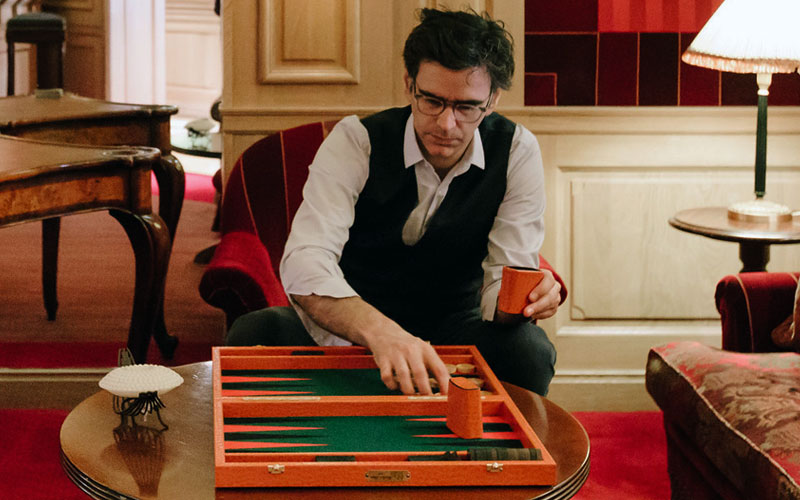
Welcome to our Backgammon FAQs for Beginners! If you're new to backgammon or just curious, you've come to the right place. We've compiled a list of the most common questions beginners have about this exciting game. Feel free to reach out with more queries, and don't forget to check out our Rules page for complete backgammon guidelines. For a handy glossary of backgammon terms, head over to our Glossary. For more in-depth strategies, take a look at our Backgammon Lessons by Bill Robertie.
What's the main goal in backgammon?
In backgammon, your objective is to move all your checkers around and into your home board, then bear them off. The first player to do so wins the game.
Can I skip a turn if I don't want to roll the dice?
No skipping allowed! Every turn, you must roll the dice and make all legal moves possible. The only exception is when you have a checker on the bar, and your opponent's home board is closed.
When can I consider my move complete?
Your move is done when you lift the dice from the board. Until then, you can freely adjust your checker positions. Remember, once you've lifted the dice, no changes are allowed, except for correcting an incorrect move before your opponent rolls.
What's "Bar" in backgammon?
The bar is the elevated ridge dividing the inner and outer tables. It's where you place hit checkers.
What are the inner and outer tables?
Imagine the backgammon board folding in half. The two halves are the inner table and the outer table. The inner table contains your home board and your opponent's home board, depending on how you set up the checkers.
Can I change my mind after making a move?
Sure thing! You can move your checkers and reconsider their positions. Just remember to put them back where they were before making a new move.
Is there a limit to how many checkers I can pile on one point?
Most backgammon variations allow stacking as many checkers as you want on a single point. But watch out for stacking too high – it's often not the wisest move.
How do I decide who goes first?
Roll a die each to start. The higher roll goes first, using the total of both rolls. Subsequent turns involve rolling two dice, re-rolling if both show the same number.
What's the mid-point?
Your 13-point is the midpoint. Starting the game, you have five checkers there, strategically placed for moves to the outer board.
What's the ultimate backgammon strategy?
There's no one-size-fits-all strategy in backgammon. This dynamic game requires adapting to changing circumstances. Explore five key strategies: blitz, back game, holding game, priming game, and running game.
How do I choose a quality backgammon set?
For a great set, focus on a smooth playing surface – leather or felt-covered boards for quieter play, inlaid or printed points for seamless checker movement, and opt for a tournament-sized board for a spacious feel.
What's the price range for a quality backgammon set?
Quality sets come in all price ranges, from budget-friendly to luxurious. Check out our website for recommendations by price.
Dice matters: what should I know?
Wooden or plastic dice work for casual play, but precision dice ensure consistently random rolls for serious games.
Gammon or backgammon: what's the difference?
Gammon: You bear off all your checkers before your opponent bears off any – a double win. Backgammon: You bear off all your checkers while your opponent still has checkers in your home board or on the bar – a triple win!
Can I skip a move if I want to?
If you have legal moves, you must play them. When only one move is legal, use the higher die if possible, or the lower die if not. You can strategically move fewer pips than the higher die shows, playing the lower die first.
What's a closed board?
When your home board has all six points filled with two or more checkers each, it's a closed board. Opponents with checkers on the bar can't re-enter until a point opens up.
What's cocked dice?
Dice must fully rest on the right side of the board and lay flat. If dice cross the bar, leave the board, or end up on a checker, they're "cocked," and you must reroll both.
What's the doubling cube's purpose?
The doubling cube spices up backgammon. It starts on the bar with a 64 showing (representing 1). It's doubled during the game, allowing players to increase the stakes strategically.
What are the best opening moves?
Certain moves – like 3-1, 4-2, 6-1, 6-5, and 5-3 – are solid opening choices. They secure key points on the board for a strong start.
To view a comprehensive list of potential Opening rolls, visit our article on the Top 15 Backgammon Opening Rolls.
What size is a tournament backgammon board?
Tournament boards come in various sizes. Most have spaces for 44mm diameter checkers.
Have fun exploring the world of backgammon with these FAQs! Remember, practice makes perfect, and every game is a chance to learn and improve. Enjoy the journey!